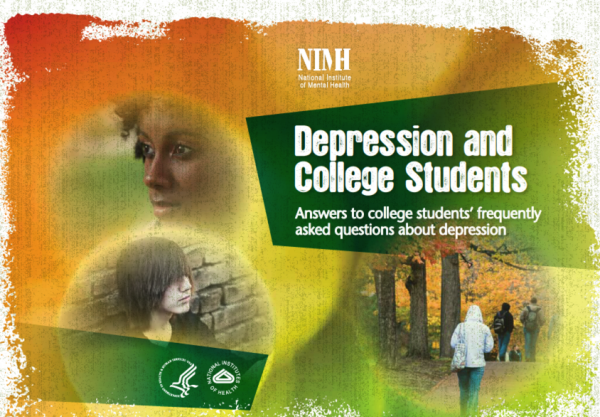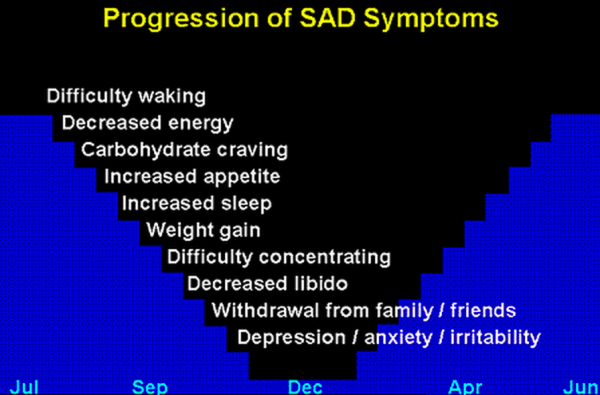Seasonal Affective Disorder | realities behind SAD and a few myths

 Seasonal Affective Disorder | Myths and Realities
Seasonal Affective Disorder | Myths and Realities
Whether you’re waiting for the bus or train, or going for a walk through a bustling park, there’s a good chance you will encounter at least one person suffering from Seasonal Affective Disorder (SAD), a cyclical type of depression believed to be caused by a lack of sunlight.A recent study conducted by Yellowbrick found that one in every 30 Americans suffers from seasonal affective disorder—that’s as much as the entire population of Minnesota and Wisconsin.
It’s not always easy to recognize SAD sufferers. Not only are their symptoms internal, but individuals with SAD are highly unlikely to talk about or seek help for their illness. People with SAD often don’t want to speak with professionals because they fear the social stigma, which often waves this type of depression off as laziness or a case of the winter blues.
But while SAD is often misunderstood, it is a very real disorder. “There are a lot of myths. SAD is not a myth.
It is a mental disorder that is incompletely understood and also something that is complicated by questions about the role of evolutionary biology,” president of the American Psychiatric Association Dr. Jeffrey Lieberman explained to the New York Times.
To dispel this stigma and help people better understand the complex illness, we’ve listed and debunked some of the most common Seasonal Affective Disorder myths: Myth #1: Seasonal Affective Disorder is the same is the winter blues. When the temperature drops and days grow shorter, it’s natural to feel a loss of energy. The “winter blues” is a common experience, and can usually be cured by physical activity and regular sleep.
Myth #1: Seasonal Affective Disorder is the same is the winter blues. When the temperature drops and days grow shorter, it’s natural to feel a loss of energy. The “winter blues” is a common experience, and can usually be cured by physical activity and regular sleep.
People with SAD, however, cannot always find solace so simply, often requiring psychiatric treatment, medication, and phototherapy—a treatment that involves exposing patients regularly to special lamps to boost melatonin and serotonin levels.
Myth #2: SAD only happens in the winter. SAD is thought to be caused by a lack of sunlight, so it makes sense that the majority of SAD episodes are reported to occur during the winter. On short winter days, there is only a brief window of time for taking in sun.
However, the winter isn’t the only time that SAD episodes occur. A less common type of SAD occurs during the spring and summer.
Many of the symptoms of winter and summer SAD sufferers are the same, such as depression and anxiety. However, while individuals with traditional winter SAD typically experience a loss of appetite and sex drive, those with summer SAD often see an increase.
Myth #3: Individuals with SAD are depressed throughout the year. After SAD episodes have run their course, true SAD sufferers will feel normal again.
In order to be diagnosed, you must only experience depressive symptoms seasonally, and they must occur during the same period of time for two consecutive years.
Myth #4: People who think they have SAD are just lazy.
All they need is an attitude adjustment. Just as people with the flu or breast cancer can’t switch off their symptoms, people with SAD can’t simply decide to turn off their disorder.
While experts don’t understand all the causes of the disease, they agree that it’s a genuine medical disorder caused by genetics, brain chemicals, and other biological components.
Myth #5: The only way to treat SAD is antidepressants.
While doctors might recommend medication in extreme cases, there are many other effective forms of treatment. Phototherapy and cognitive therapy have both proven to be effective ways to combat SAD symptoms.
Myth #6: Only women get SAD.
While studies indicate that as many as 90% of SAD sufferers are women, SAD can affect people of all genders, ages, and backgrounds.
Myth #7: SAD isn’t that serious. You don’t NEED to seek medical treatment.
SAD is a grave mental disorder and can severely hinder your ability to function and perform normal activities. Symptoms include fatigue, crying spells, body aches, and weight gain.
People with SAD often withdraw from their friends, struggle to complete simple tasks, and get into arguments with others. Without treatment, SAD can negatively impact your future. If you think you are suffering from Seasonal Affective Disorder, contact a prescriber as soon as possible. Get the information / treatment you need to lead an active life.
Without treatment, SAD can negatively impact your future. If you think you are suffering from Seasonal Affective Disorder, contact a prescriber as soon as possible. Get the information / treatment you need to lead an active life.
Information from www.jpmsonline.com


